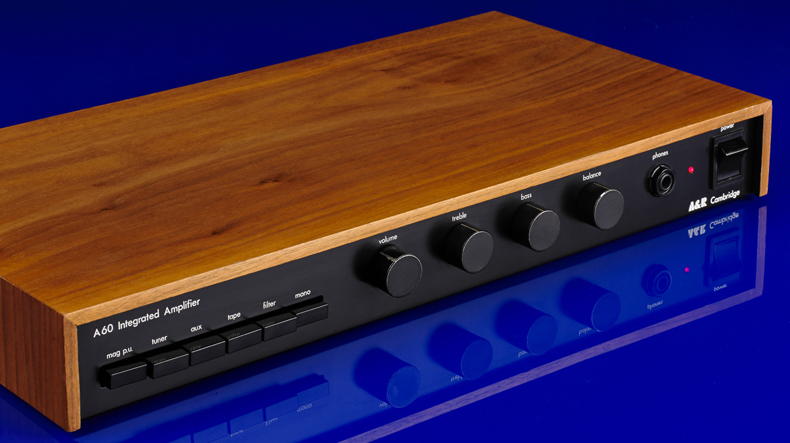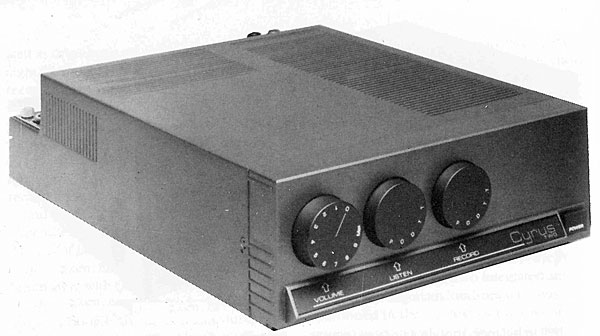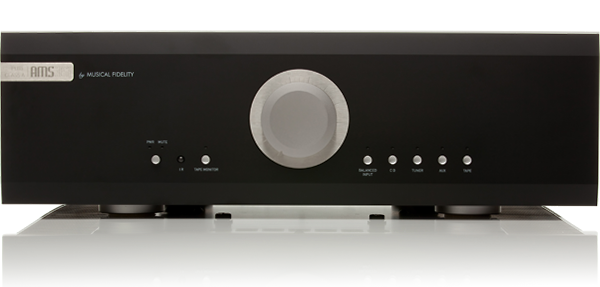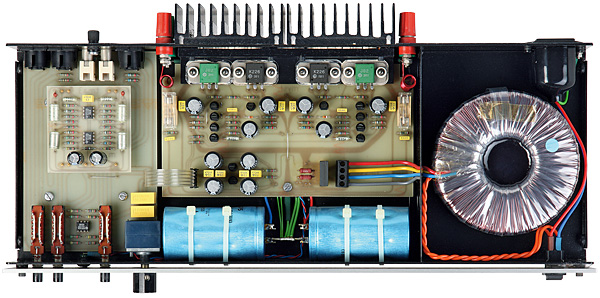The golden period of Japanese hi-fi was probably from 1976 to 1981, when the Yen was severely undervalued on international markets, allowing Japanese manufacturers to produce items that Western businesses simply couldn’t match. Despite the fact that Japanese hi-fi became linked with value, all of the main brands had high-end sections. The items that came out at this time were strange and fantastic; these enterprises could afford to be bold – and many of them were.
Sony’s TA-E86/TA-N86 high-end preamplifier and power amplifier combo was one such example. When it was first introduced in March 1978, it seemed far-fetched and unusual. Unlike more affordable Japanese hi-fi, though, it wasn’t just about appearances; it was also a fascinating engineering concept. This was Sony’s second ever ultra high end pre-power pairing, and it was part of what has come to be known as the ‘Pre-Esprit’ era. It paved the way for the famed ‘Esprit’ series, which became synonymous with Japanese high-end in the 1980s.
With the possible exception of the original 1983 CD-P101 CD player, this pre/power amp combo followed closely behind what is undoubtedly Sony’s most ambitious and technologically complex product ever. The TA-N88 power amplifier, introduced in 1977, was a spectacular Class D design with a claimed 2x150W RMS per channel, V-FET output devices, and a switching power supply — very much science fiction at the time! It was sold with the matching TA-E88 preamplifier, which was a perfect visual match. By the age’s gadget-festooned standards, these Shigeo Takahashi-designed signature separates were stunningly simple.
So, let’s get back to the TA-E86B/TA-N86B. This was a six-month follow-up to its renowned forerunner, and it was a far more inexpensive proposal. But it’s all relative, because each of them would set you back roughly £1,000 – four times the cost of a Linn Sondek LP turntable at the time, and more than a Mini 850 automobile. If you had the cash, Sony also manufactured a matching TA-D88B four-way active crossover, ST-J88B digital FM tuner, and TC-K88B cassette player to complete the ‘Pools winner’ stack system!
Due to endemic unreliability, the enormously complex TA-N88 power amplifier was swiftly phased out; its V-FETs were famously problematic, and the power supply was on the ragged edge, leading its capacitors to fail due to heat damage. The TA-N86 dutifully replaced the TA-N86 as Sony’s top power amplifier, and was always a significantly better sounding – and more dependable – product. Indeed, it was so popular that it is estimated that about ten thousand pre-power combinations were sold in 1986, compared to just over half that for the 88s. The year 1986 lasted from 1986 to 1984, which is a very long time in Sony years!
The most notable feature of this set is its diminutive size – prior generations of high-end Sonys were at least twice as tall, making them large and cumbersome. Despite this, the TA-E86/TA-N86 were also very small, measuring 480x160x410mm (WxHxD). This was a striking anti-fashion statement given by Sony in a hi-fi industry where more was better, and it also foreshadowed its new 1979 range of amplifiers, which were significantly slimmed down. Almost all Japanese hi-fi separates will soon have the same slim dimensions, ushering in a new style that would rule the 1980s. The Sony pair appeared “both discreet and exceedingly sophisticated,” according to Hi-Fi Choice at the time.
Sony could not have created such a powerful visual statement if the TA-N86 power amplifier had not been developed in the way it was. In Class AB mode, it put out a claimed 100W RMS per channel into 8 ohms, but it could be converted to full Class A mode, where it put out a claimed 30W RMS each side. Due to the use of a switching power supply, this was only achievable from such a compact and slim package. This isn’t a significant deal now, but it was quite uncommon in consumer audio products in 1978. Because a suitable toroidal transformer would be too large to fit inside the Sony’s chassis, the company’s ‘Pulse Power Supply’ was used instead. When the company’s next line of integrated amplifiers was released, all of them included variants of this.
The N86 is a work of art on the inside. Four Sony High fT power transistors, two per side, are connected to the enormous heatsinks that run along both sides of the enclosure. In Class A mode, the case gets pretty hot after about half an hour – albeit not quite Musical Fidelity A1 hot. Dual mono construction is used throughout, and high-quality Japanese passive components are used. Indeed, the construction is impressive, with the unit being built to exceptionally high standards without being excessively frivolous. The fascia is a beautiful 6mm thick brushed aluminium slice with etched writing instead of screen printing. The ‘B’ suffix models seen here have a gunmetal finish that looks very close to Apple’s ‘Space Grey’ on MacBook Pros; ‘non-B’ silver variants were also available in Japan.
Switches for Class A or Class AB operation, as well as AC or DC-coupled mode, are located around the back. The latter mode is employed when paired with the corresponding TA-E86 preamp. The front-mounted on-off switch is luxurious to operate and is accompanied by a single, little green power LED — the polar opposite of many Japanese amplifiers of the time’s ‘Tokyo by night’ lightshows. The Sony’s heatsinks are smooth and won’t injure you if you pick them up at the wrong angle, unlike practically every other amplifier I’ve seen with exposed heatsinks. They even contain a center detent for a long rubber band to dampen the metallic resonance of the fins; unfortunately, most secondhand copies are missing this feature.
The matching TA-E86 preamplifier is equally stunning, albeit in a different way than the power amp. It has a good quality ALPS volume potentiometer and other switchgear, premium components, and even a second winding taken from the mains transformer for the MC phono stage; once again, simplicity, proper engineering, and high component quality are key; it has a good quality ALPS volume potentiometer and other switchgear, premium components, and even a second winding taken from the mains transformer for the MC phono stage. No integrated circuits are employed anywhere, just like the power amp it’s paired with. Basic cartridge matching (3 ohm or 40 ohm for MC, 25k, 50k, or 100k ohm for MM) and a switchable low filter are among the few features. Surprisingly, the preamp features two sets of outputs, one of which has a built-in bass enhancement.
This setup screams ‘Japanese high end’ — it’s clear, open, accurate, and transparent, with remarkable insight into the recording, outstanding dynamics, and seemingly limitless power. It’s gutsy and gripping in a way that most other amplifiers, new or old, aren’t, and it drives any average loudspeaker to incredible volumes – especially considering the year it was released. However, there is a catch: the TA-N86 power amp has a powerful sound – but only to a point.
Because of the way Sony’s switching power supply is structured, its output declines into lower speaker loads in Class AB mode, producing less power into 4 ohms than into 8. In fact, this isn’t an issue with most speakers and at anywhere near average volume levels, and you’re left surprised by its speed, clarity, and grip, but it’s something to keep in mind if you’re looking for something more like to a public address sound system.
The upper midband has a little tinselly tone, which is the only flaw in an otherwise superb performance. Snare drums and female voices are ‘clearly lit’ in the mix, but it’s not unpleasant by any means. This confirms the ‘Japanese high end’ stereotype: it’s a flamboyant, upfront amp with a lot of detail but isn’t the most subtle of performers. When you switch to Class A mode, though, everything changes. You suddenly have less power, but everything is smoother and more three-dimensional. This pre/power now sounds incredibly delicate, three-dimensional, and full of organically articulated detail.
In Class A mode, things also seem to change rhythmically, as you hear a swing in the music that wasn’t present previously. This combo sounds super-fast and exhilarating in Class AB, but it’s a touch unrelenting in Class A, whereas it keeps the speed but weaves the music together in a more organic way in Class A. The outcome is quite amazing — James Taylor’s acid jazz, for example, is a lot of fun while also retaining all of the exquisite Japanese high end delicacy and precision. This track also demonstrates the Sony duo’s exquisite sound staging, with everything locked rock-solid in three-dimensional space.
It’s remarkable to hear every single strand of the mix playing by itself, yet keeping nicely synced to everything else, when you feed this pre/power with some vintage new wave in the form of The Motors’ Forget About You. The precision is excellent, but it doesn’t feel like the recording is being dismantled in before of your eyes, at least in Class A. Rather, the music saunters along with a controlled ferocity that conveys the original recording’s passion. When you listen to a fantastic eighties pop production like Grace Jones’ Trevor Horn-produced classic Slave To The Rhythm, the production effects and dynamic tension in the singer’s voice astound you. The whole thing comes together in such a way that you can’t help but wonder at the depth and musicality of the combo.
In the grand scheme of things, Sony’s TA-E86 preamplifier/TA-N86 power amplifier combination is noteworthy, as is the wider Japanese high end. It was the company’s first stable extremely high-end amplifier combination, with a sound to match the luxurious appearance. It was also a clear inspiration for the company’s legendary Esprit series, but it was superior in my opinion – more pure in style and sound. Many preamps and power amplifiers are still in use over forty years later, which is a testimonial to their quality.







